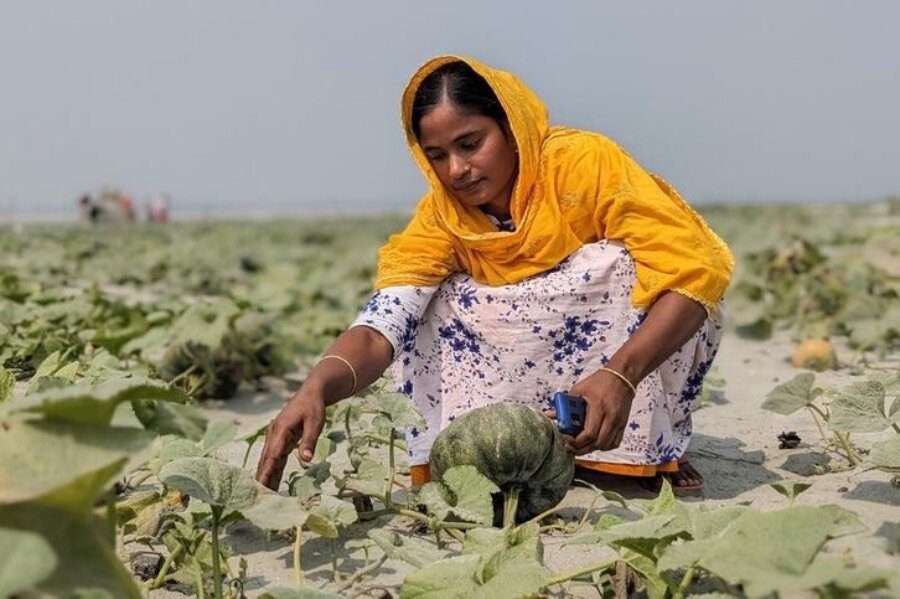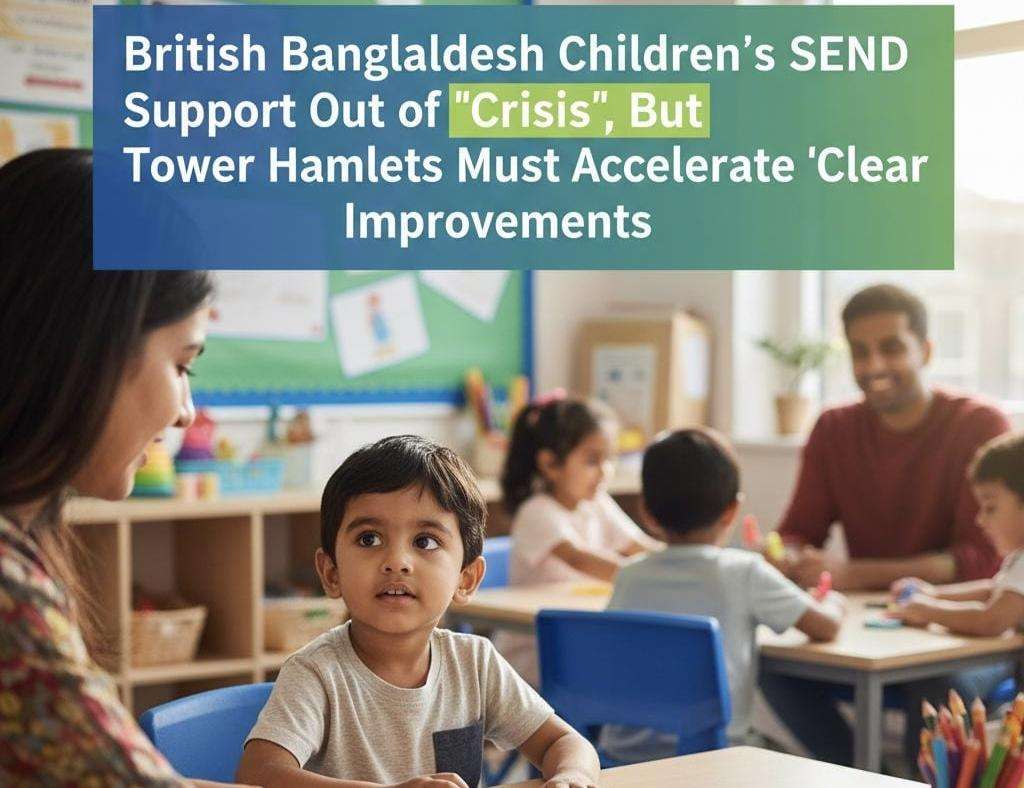[caption id="attachment_2737" align="alignleft" width="900"]
 Farmer Asha Akhter, 29, says things have changed "a lot" since the WFP-supported project was launched. Photo: WFP/Lena von Zabern
Farmer Asha Akhter, 29, says things have changed "a lot" since the WFP-supported project was launched. Photo: WFP/Lena von Zabern[/caption]
The motorboat trip takes less than ten minutes before the first sand island – or char in local Bengali – emerges from the riverbed of the Brahmaputra, one of 25 rivers that flow through this vast, flat northwestern region. of Bangladesh. Through the gray-blue wall of sky and water, the sandbar is barely visible.
More than 200 sand islands are scattered across this stretch of the Brahmaputra River, one of the world's longest rivers. But this one, called Char Borovita, is unlike any other.
On the steep slope of the river, dozens of fields appeared, perfectly aligned. Women dressed in colorful costumes stroll among green vines with heart-shaped leaves, watering the precious crops at their feet. Chunky pumpkins grow from the sand like mirages in this harsh land.
These drought-resistant plants, ideal for sandy environments, are part of a multi-pronged pilot project launched by the World Food Program (WFP) in 2018 in Kurigram district in the northeast of the country.
Combining disaster management training, climate insurance and livelihood initiatives, the program aims to answer a fundamental question:
How can the poorest people in Bangladesh protect themselves against the devastating consequences of climate change?
“Things have changed a lot,” says pumpkin farmer Asha Akhter, yellow scarf wrapped around one shoulder, as she assesses the project’s paybacks. That phrase is heard often among the 25 women growers who collectively tend the pumpkins on Char Borovita.
Everyone in this district knows what the climate crisis means. As the years passed, the rainy season and floods became more and more serious. In 2020 alone, rivers in the country overflowed their banks five times, causing the largest and longest flood in 20 years.
Bangladesh is one of the most vulnerable countries in the world to rapid climate change. By 2050, the World Bank Group estimates that a third of its agricultural output could be lost to extreme weather events and 13 million people could become climate migrants in the country. For the five million people who make their living from Bangladesh's tanks, the consequences have been dire. Extreme weather conditions destroyed crops and income, and displaced people who had always lived on these river islands.
Washed away
“My house was right here, but it was washed away,” says 41-year-old Amina Begum, another Borovita farmer, as she pointed to a spot on the island that drops off steeply, giving way to the muddy brown river. ”I had to move to this char, but my situation remains precarious.“
Like many others here, Amina owned land and gradually lost it to Brahmaputra. Floods have forced her to relocate five times in the past 25 years. Any new security measures discovered never last long. Growing pumpkins on these temporary river islands allowed Amina and other climate-affected women to start farming again – a buffer against future shocks.
“You see our landscape here,” she says, pointing to the shallow sand islands in the distance. “It is very risky. When the river erodes the land, families lose everything.”
“I'm poor,” Amina adds, “I don't have enough money to move somewhere else. If I had enough money, I would move to a safer place.“
There are few roads to a better life in Kurigram, one of the poorest regions in Bangladesh. Many people here work as farmers, but seven out of ten people suffer from severe hunger.
Life on sand islands is especially harsh. Communication and transportation routes are complex and health care is limited. Children often make arduous journeys on an empty stomach to reach the nearest sandbank where the school is located. During the rainy season, these daily trips can be deadly.
“During the floods, we suffered in many ways,” says 33-year-old Bilkis Begum, another pumpkin grower on the island, looking back on the last rainy season. “There was no way to communicate. I was stuck in the house and my husband could not work, so we had no money left. We couldn't afford three meals a day.”
 Farmer Asha Akhter, 29, says things have changed "a lot" since the WFP-supported project was launched. Photo: WFP/Lena von Zabern[/caption]
The motorboat trip takes less than ten minutes before the first sand island – or char in local Bengali – emerges from the riverbed of the Brahmaputra, one of 25 rivers that flow through this vast, flat northwestern region. of Bangladesh. Through the gray-blue wall of sky and water, the sandbar is barely visible.
More than 200 sand islands are scattered across this stretch of the Brahmaputra River, one of the world's longest rivers. But this one, called Char Borovita, is unlike any other.
On the steep slope of the river, dozens of fields appeared, perfectly aligned. Women dressed in colorful costumes stroll among green vines with heart-shaped leaves, watering the precious crops at their feet. Chunky pumpkins grow from the sand like mirages in this harsh land.
These drought-resistant plants, ideal for sandy environments, are part of a multi-pronged pilot project launched by the World Food Program (WFP) in 2018 in Kurigram district in the northeast of the country.
Combining disaster management training, climate insurance and livelihood initiatives, the program aims to answer a fundamental question:
How can the poorest people in Bangladesh protect themselves against the devastating consequences of climate change?
“Things have changed a lot,” says pumpkin farmer Asha Akhter, yellow scarf wrapped around one shoulder, as she assesses the project’s paybacks. That phrase is heard often among the 25 women growers who collectively tend the pumpkins on Char Borovita.
Everyone in this district knows what the climate crisis means. As the years passed, the rainy season and floods became more and more serious. In 2020 alone, rivers in the country overflowed their banks five times, causing the largest and longest flood in 20 years.
Bangladesh is one of the most vulnerable countries in the world to rapid climate change. By 2050, the World Bank Group estimates that a third of its agricultural output could be lost to extreme weather events and 13 million people could become climate migrants in the country. For the five million people who make their living from Bangladesh's tanks, the consequences have been dire. Extreme weather conditions destroyed crops and income, and displaced people who had always lived on these river islands.
Farmer Asha Akhter, 29, says things have changed "a lot" since the WFP-supported project was launched. Photo: WFP/Lena von Zabern[/caption]
The motorboat trip takes less than ten minutes before the first sand island – or char in local Bengali – emerges from the riverbed of the Brahmaputra, one of 25 rivers that flow through this vast, flat northwestern region. of Bangladesh. Through the gray-blue wall of sky and water, the sandbar is barely visible.
More than 200 sand islands are scattered across this stretch of the Brahmaputra River, one of the world's longest rivers. But this one, called Char Borovita, is unlike any other.
On the steep slope of the river, dozens of fields appeared, perfectly aligned. Women dressed in colorful costumes stroll among green vines with heart-shaped leaves, watering the precious crops at their feet. Chunky pumpkins grow from the sand like mirages in this harsh land.
These drought-resistant plants, ideal for sandy environments, are part of a multi-pronged pilot project launched by the World Food Program (WFP) in 2018 in Kurigram district in the northeast of the country.
Combining disaster management training, climate insurance and livelihood initiatives, the program aims to answer a fundamental question:
How can the poorest people in Bangladesh protect themselves against the devastating consequences of climate change?
“Things have changed a lot,” says pumpkin farmer Asha Akhter, yellow scarf wrapped around one shoulder, as she assesses the project’s paybacks. That phrase is heard often among the 25 women growers who collectively tend the pumpkins on Char Borovita.
Everyone in this district knows what the climate crisis means. As the years passed, the rainy season and floods became more and more serious. In 2020 alone, rivers in the country overflowed their banks five times, causing the largest and longest flood in 20 years.
Bangladesh is one of the most vulnerable countries in the world to rapid climate change. By 2050, the World Bank Group estimates that a third of its agricultural output could be lost to extreme weather events and 13 million people could become climate migrants in the country. For the five million people who make their living from Bangladesh's tanks, the consequences have been dire. Extreme weather conditions destroyed crops and income, and displaced people who had always lived on these river islands.







.svg)
